Keeper’s marine growth prevention systems (MGPSs), also known as antifouling systems) usually consist of pairs of copper and aluminum anodes, mounted in sea chests or strainers and connected to a control panel. Where cupro-nickel pipework is used on board, a ferrous anode is used instead of the aluminium anode.
In operation, the copper anode produces ions which are carried by the flow of seawater, creating an environment where barnacles and mussels will not settle or multiply.
By introducing copper ions in very small concentrations, around two parts per billion, the system interrupts the settlement sequence of mussel and barnacle larvae. Instead of adhering to the surface of sea chests, strainers, and pipework, the larvae pass harmlessly through the cooling water system to the discharge point.
Without antifouling protection, pipes can become encrusted with organisms, leading to a blockage which reduces the efficiency of the seawater cooling system.
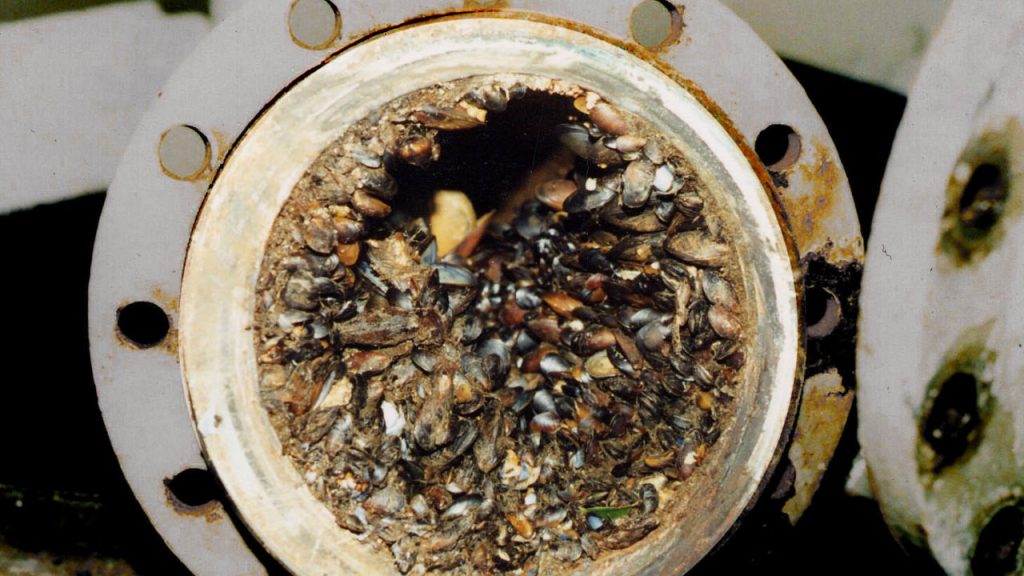
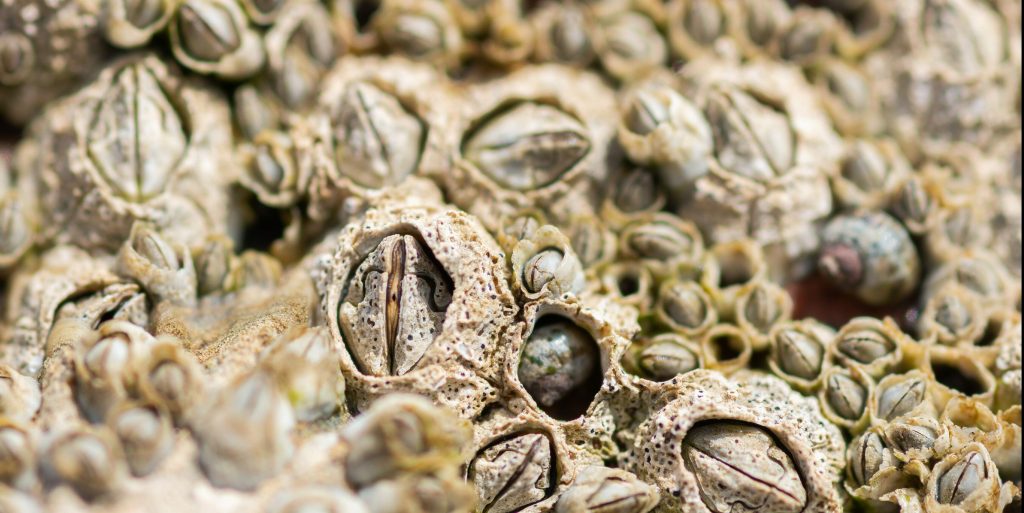
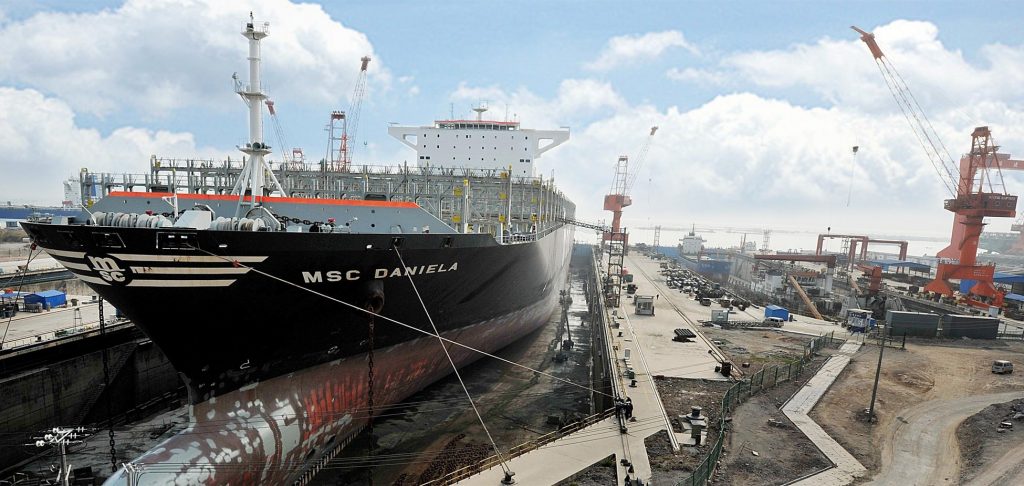

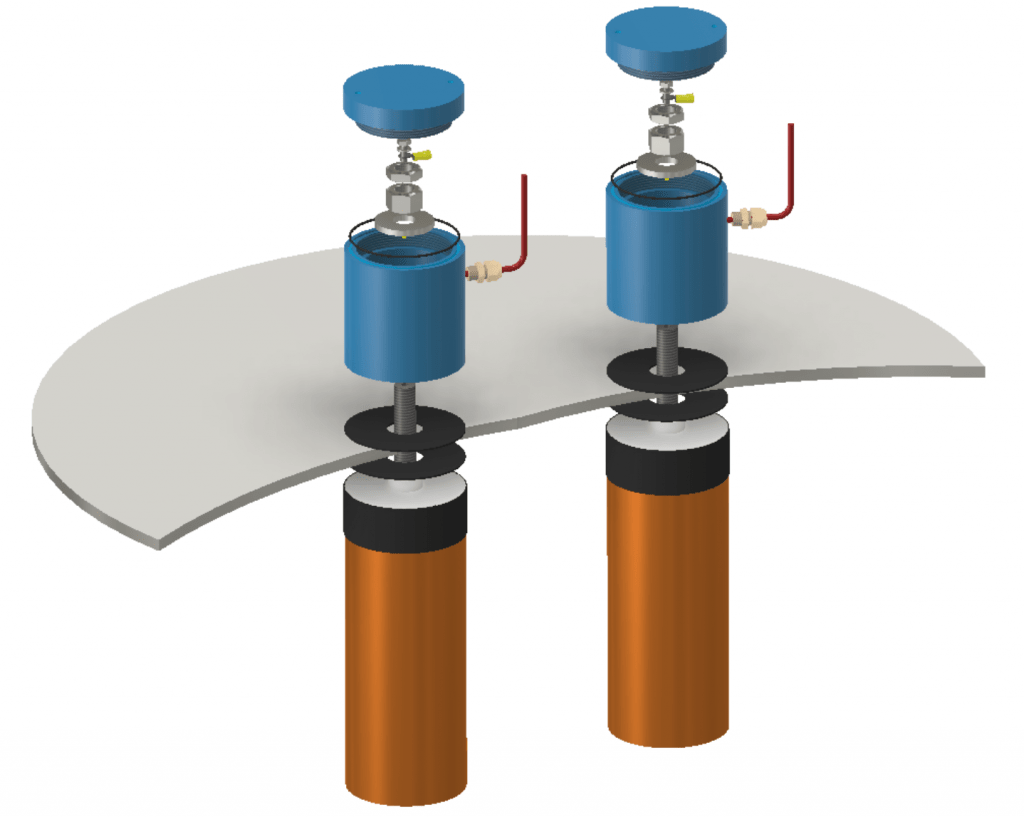



A Dual-Action System
Our marine growth prevention systems (MGPSs), also known as antifouling systems) usually consist of pairs of copper and aluminum anodes, mounted in sea chests or strainers and connected to a control panel. Where cupro-nickel pipework is used on board, a ferrous anode is used instead of the aluminium anode.
In operation, the copper anode produces ions which are carried by the flow of seawater, creating an environment where barnacles and mussels will not settle or multiply.
By introducing copper ions in very small concentrations, around two parts per billion, the system interrupts the settlement sequence of mussel and barnacle larvae. Instead of adhering to the surface of sea chests, strainers, and pipework, the larvae pass harmlessly through the cooling water system to the discharge point.
Without antifouling protection, pipes can become encrusted with organisms, leading to a blockage which reduces the efficiency of the seawater cooling system.
When a system is installed during vessel construction anodes are generally fitted in the sea chests using special sleeves or flange mountings. If a system needs to be retrofitted prior to scheduled drydocking on the other hand, the anodes can be mounted in the seawater strainers. This simplifies the replacement process when anode renewal becomes necessary.
In special cases where the Cathelco system is installed to supersede existing chemical-based antifouling equipment, the anodes can be mounted in treatment (electrolysis) tanks in order to reduce installation costs by utilizing existing pipework.
Options and features of the Cathelco MGPS
- Steel pipework protected by copper and aluminum anodes
- Cupro-nickel pipework protected by copper and ferrous anodes
- Sea chest-mounted anodes typically installed during vessel construction and replaced at drydocking
- Strainer-mounted anodes can be replaced when the vessel is in port
- Electrolysis tanks can be used to replace chemical systems, or in specialized applications where sea-chest or strainer mounting is not possible
- Environmentally friendly, chemical-free system typically operates with copper concentrations of just two parts per billion.
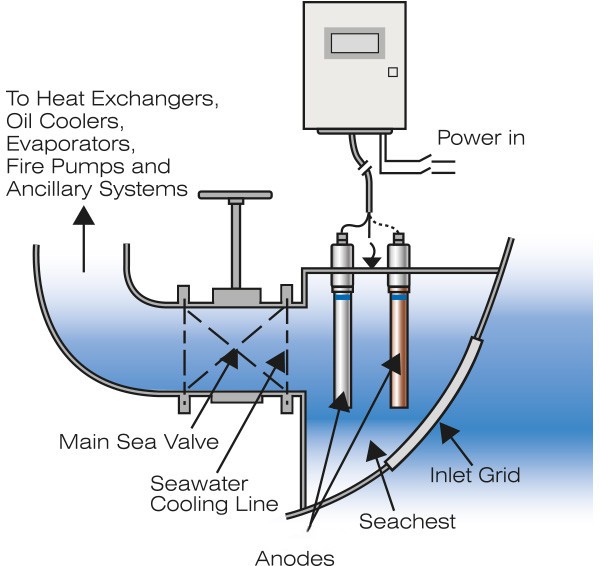
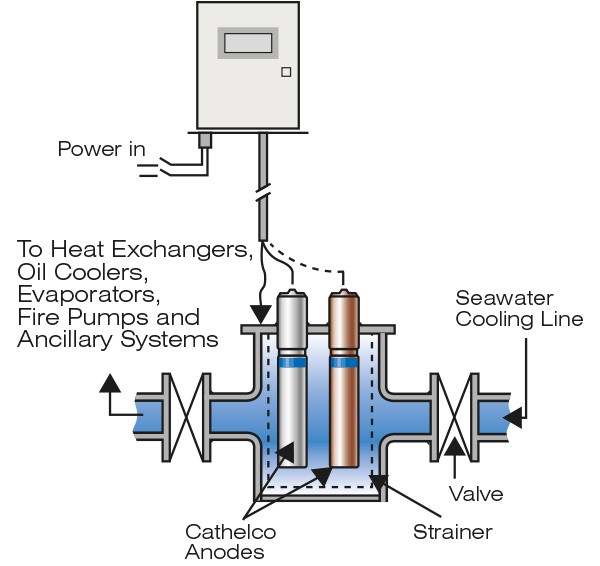
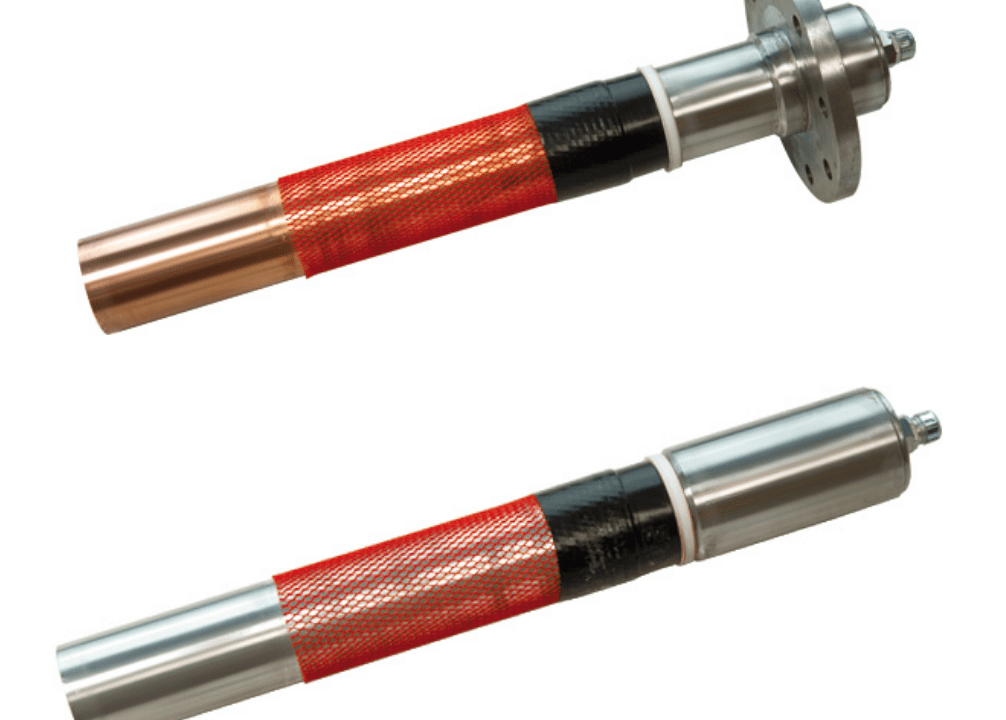



Biofouling And Corrosion
Corrosion can be accelerated in two ways. The presence of biofouling on a metal surface leads to a decreased oxygen concentration below the layer of fouling. This area becomes anodic when exposed to oxygenated seawater, resulting in pitting corrosion under the fouling. Another cause of corrosion is bacteria – for example, sulfate-reducing and iron bacteria are well known examples of microorganisms whose biological activity or metabolic by-products can cause corrosion. These bacteria live in areas with a low oxygen concentration, for instance under a layer of aerobic fouling organisms, or in de-aerated water such as that found in oil storage tanks and well flood water. Efficient fouling control results in a reduction in pitting and crevice corrosion.
Most Keeper marine growth prevention systems have a dual action, eliminating biofouling and suppressing corrosion. Where steel pipework is in use, the corrosion suppression anodes are made of aluminum, whereas cupro-nickel pipework is protected using ferrous anodes. When these anodes are fitted, corrosion rates are significantly reduced, resulting in a longer lifetime for the pipework and other equipment connected to the seawater system.
Deck-mounted electrolysis tanks are designed with pipework that distributes the dosed seawater to pumps or sea chests. Copper ions are carried throughout the seawater pipework system, eliminating blockages caused by barnacles and mussels. Control mechanisms can be linked to inlet valves or pumps to automatically regulate the dosage between sea chests that are in or out of use. The units are specifically designed for each application and supplied as skid-mounted turnkey modules ready for installation.

